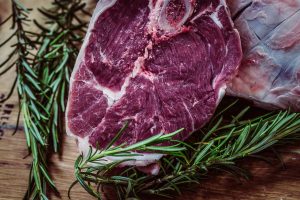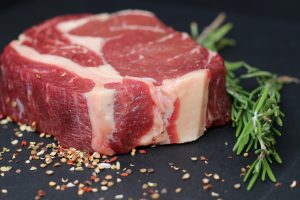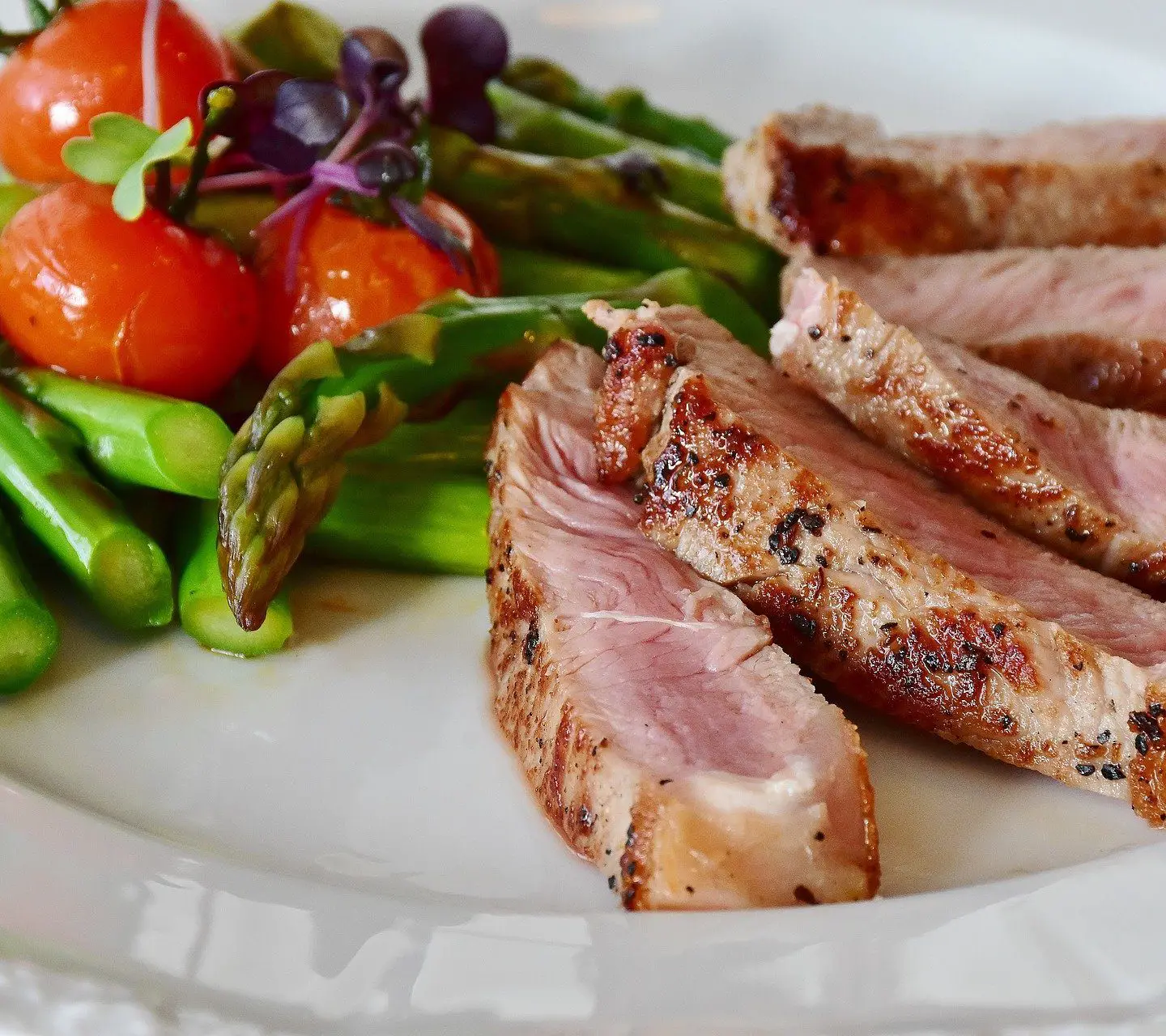A roasting thermometer can be used for frying, cooking or grilling – in the oven, on the stove or on the grill.
A meat thermometer is used to measure the inside temperature of the meat to know when it is ready. Meat thermometer and roasting thermometer are the same.
Roasting tips – how to avoid the meat being cooked
When you fry the meat in a frying pan, be sure to leave it on for a while before you fry it.
The problem that arises with a cold piece of meat in a hot frying pan is that the meat can lower the temperature in the frying pan to the extent that the meat is cooked and gets a greyish color. This is not what we want as we want it to be perfectly cooked.
For the same reason – be sure to let the frying pan get really hot before you start frying and do not put too many pieces of meat at once.
Do not avoid butter when frying, butter is both healthy, tasty and practical. You know it’s time to fry when the butter stops bubbling.
Why do I need a meat thermometer/roaster thermometer?
It can be difficult, in many cases impossible, by just looking at the surface of the meat to know when it is done, especially with larger pieces of meat.
By trying to cut the meat where the piece of meat is at its thickest and looking at the meat juice can often determine if it is ready. This method usually works well with chops, but if it is a larger piece of meat it is difficult. The problem with sample cutting is that there can be many cuts that are not so beautiful and also make the meat drier.
The solution is to use a meat thermometer for perfect results when roasting or grilling meat.
Meat thermometer and roasting thermometer are the same. Similarly, the inside temperature and the roasting temperature are the same. Do not confuse oven temperature which is not the same.
How to use a meat thermometer
Remember that the tip of the meat thermometer should always be placed in the middle of the meat, where it is thickest. It is thus the point that has the lowest temperature in the piece of meat because when it is cooked, the temperature is first raised from the surface and spreads inward.
Try to hit the center of the meat with the tip of the thermometer as best you can. If, when the meat is ready, you suspect the thermometer has been misplaced, move the thermometer and measure the temperature and continue to cook it if necessary.
Let the meat rest
After the meat has been cooked to the desired inside temperature, it is a good idea to let it rest – preferably with foil over (to equalize the temperature). It makes the meat juicy because the meat juice is preserved.
When the meat is resting, the temperature usually rises at least 2 ° C, for larger pieces of meat up to 5 ° C. Therefore, you can stop cooking the meat at a lower internal temperature if you plan on letting the meat rest.

Rare, bloody, Medium or Well Done?
How you want your meat is, of course, a matter of taste.
- Rare or bloody gives pink-red meat with red meat juice.
Medium gives pink meat with pink-red meat juice.
Well done is cooked through and the meat is greyish with translucent meat juice. - Generally, medium roast provides the juiciest meat without being too raw. My general recommendation is, therefore, to choose medium cooked beef.
Many people have the habit of always having the meat cooked through. If you have never tried medium then I think you should.
Choosing oven temperature
The best oven temperature is generally as low as possible (but clearly above the internal temperature you want to achieve). The lower the oven temperature the more juicy roast but it also takes longer before it is done. 125 ° C tends to be a good temperature. The meat becomes juicy without it taking forever before it becomes done.
Entrecote: Rare: 55 ° C Medium: 60 ° C Well done: 68 ° C
Beef knuckle: Rare: 60 ° C Medium: 65 ° C Well done: 70 ° C
